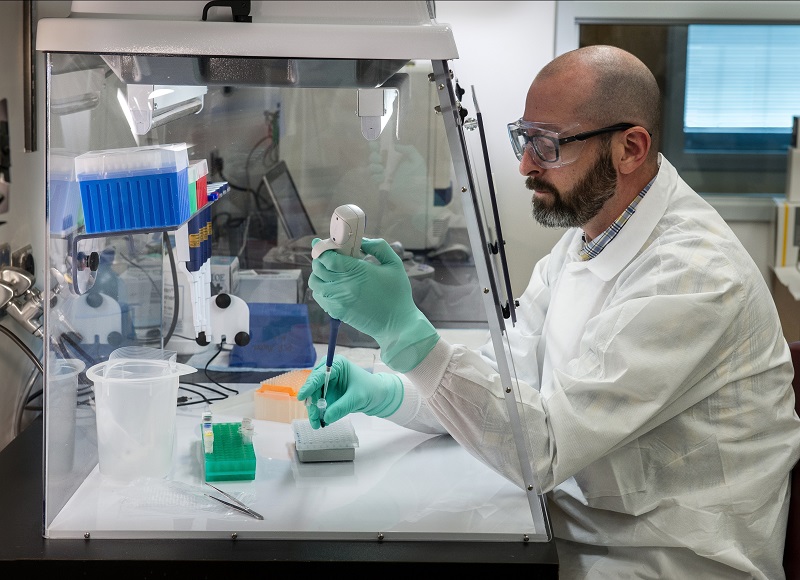Scientists are investigating why people with herpes zoster have a higher risk of stroke, according to a new study by the University of Colorado Anschutz School of Medicine. The answer now lies in a lipid vesicle called an exosome that transmits protein and genetic information between cells.
The study, published recently in The Journal of Infectious Diseases, detailed the mechanisms behind the link between herpes zoster and stroke.
Dr. Andrew Bubak, lead author of the study and assistant research professor in the Department of Neurology at the University of Colorado School of Medicine, said: “Most people know that herpes zoster produces painful skin rashes, but they may not know that the risk of stroke increases one year after infection. Importantly, the rash usually heals completely and patients feel normal, but despite this, they have a significantly increased risk of stroke when walking.”
Herpes zoster (HZ) is caused by the varicella zoster virus. The virus remains in ganglion neurons and can reactivate, causing intense pain. But researchers have found that herpes zoster also increases the risk of stroke, especially for those under 40 years of age, herpes zoster vaccination is not generally recommended. People with rash on their faces are at greatest risk, probably because they are close to their brains. To better understand its working principle, Bubak and his team began to look more closely at exosomes.
“Exosomes carry pathogenic substances that can cause thrombosis and inflammation away from the actual site of infection,” Bubak said. “This could eventually lead to a stroke in the patient.”
Plasma samples were collected from 13 herpes zoster patients and 10 non-herpes zoster patients. Samples were drawn at the time of infection and at 3-month follow-up, and exosomes were extracted from plasma. The researchers found that prothrombotic exosomes may cause thrombosis in infected patients. At 3-month follow-up, they also found pro-inflammatory exosomes, which also posed a risk of stroke.
Bubak says the results suggest that in a subset of herpes zoster patients, the virus may not return to latency, or circulating exosomes that induce a prolonged thrombotic state may persist, even after treatment is completed and the rash disappears. He says chronic use of antiviral drugs combined with antiplatelet and anti-inflammatory drugs may help.
“There are also initiatives to increase the uptake of HZ vaccines to reduce the risk of stroke, especially in individuals with known risk factors for stroke,” Bubak said. “If these findings are confirmed in larger longitudinal studies, then this may change clinical practice.”
Most doctors do not know the link between herpes zoster and stroke, and herpes zoster has an effective vaccine.
“But this is really important and easily relieved,” Bubak said. “Let them go home with antiplatelet agents.”
Collected by Creative Biostructure, that provides a wide range of products including exosomes isolated from cancer cell lines, exosomes isolated from stem cell lines, exosomes isolated from immune-related cell lines, exosomes isolated from general cell lines, exosomes isolated from body fluids, fluorescent exosomes/microvesicles, as well as lyophilized microvesicles.

